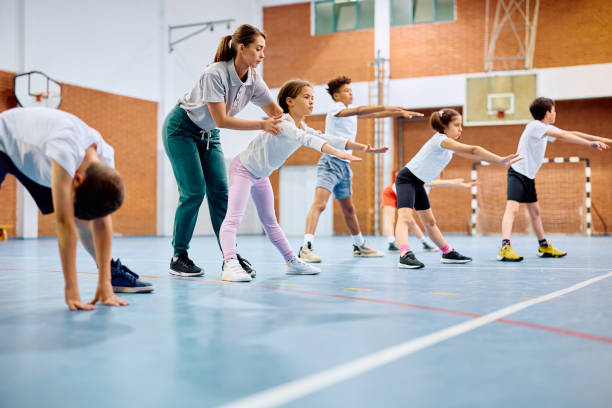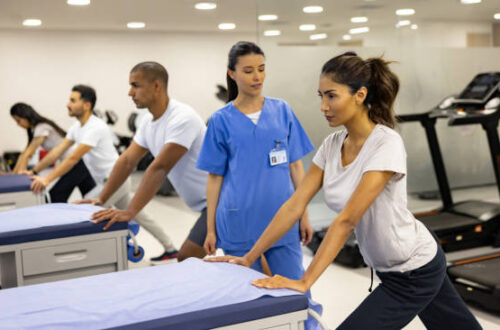Life as a student is a constant balancing act. Between classes, homework, studying, and trying to maintain a semblance of a social life, finding time for exercise often feels like an impossible task. The idea of dedicating an hour or more to a gym session can be overwhelming, leading many students to put their physical health on the back burner. However, the good news is that you don’t need a massive chunk of time or a fancy gym membership to reap the benefits of physical activity. A few minutes of exercise squeezed into your day can significantly boost your energy, improve your focus, and reduce stress. These are not just physical benefits—they directly impact your academic performance and overall well-being.
This article is your complete guide to adding quick, effective, and free workouts to your busy student life. We’ll look at why short bursts of activity are powerful. We’ll share routines you can do anywhere. Also, we’ll provide strategies to make movement a fun and regular part of your life. By the end, you’ll be equipped with everything you need to feel great, perform better, and ace your student life, one short workout at a time.
The Science Behind Short, High-Impact Workouts
Contents
It might seem counterintuitive, but short bursts of intense activity, often referred to as “exercise snacks,” can be incredibly effective. Research has shown that even a few minutes of vigorous exercise can improve cardiovascular health, metabolic function, and cognitive performance. This is particularly relevant for students who spend long hours sitting and studying.
When you sit for extended periods, your metabolism slows down, and your muscles become less active. A quick five-minute exercise routine can reverse this by increasing blood flow to your brain, delivering more oxygen and essential nutrients. This immediate boost can break you out of a mental slump, reduce brain fog, and make you feel more alert and ready to learn. Additionally, physical activity triggers the release of endorphins, which are natural mood elevators and stress relievers. This is a powerful tool for managing the anxiety and pressure that often come with exams and deadlines.
By incorporating short routines, you’re not just moving your body; you’re actively sharpening your mind and regulating your mood. It’s a scientifically-backed strategy for better grades and a healthier, happier student life.
Full-Body Routines for Every Break
The key to making exercise a habit is to find a routine that is convenient and requires no special equipment. These routines are designed to be performed in the small breaks between classes, during a study session, or while waiting for something. They are efficient and target multiple muscle groups to give you the most bang for your buck.
1. The 5-Minute Energy Burst
This is the perfect routine to do when you have a short break, like the 10 minutes between lectures. The goal is to get your heart rate up and activate your whole body.
- Warm-up: High Knees (45 seconds): Run in place, bringing your knees up toward your chest. This quickly elevates your heart rate and warms up your leg muscles.
- Exercise 1: Squats (45 seconds): A foundational lower-body exercise. Stand with feet shoulder-width apart, and lower your hips as if sitting in a chair, keeping your back straight. This works your glutes, quads, and hamstrings.
- Exercise 2: Push-ups (45 seconds): Target your chest, shoulders, and triceps. If you can’t do a full push-up, use a desk, wall, or your knees to modify the difficulty.
- Exercise 3: Glute Bridges (45 seconds): Lie on your back with knees bent and feet flat. Drive your hips up toward the ceiling, squeezing your glutes. This is excellent for strengthening your posterior chain, which is often weak from sitting.
- Exercise 4: Plank (45 seconds): A powerful core exercise. Hold a push-up position, either on your hands or forearms, keeping your body in a straight line. This strengthens your core, shoulders, and back, and improves posture.
Rest for 15 seconds between each exercise. By the end of this routine, you’ll feel energized and ready to focus.
2. The 10-Minute Strength Builder
If you have a slightly longer break, perhaps between a morning class and a lab, this routine is designed to build foundational strength. It incorporates more resistance and targets key muscle groups.
- Warm-up: Jumping Jacks (60 seconds): A classic cardio move to get your blood flowing and prepare your body.
- Exercise 1: Walking Lunges (60 seconds): Take a big step forward and lower your hips until both knees are bent at 90 degrees. Step forward with the other leg and repeat. This dynamic exercise builds leg and glute strength while also improving balance.
- Exercise 2: Inverted Rows (60 seconds): Find a sturdy table. Lie on your back underneath it and grab the edge. Pull your chest up to the table, engaging your back and biceps. This is a fantastic pull-day alternative to pull-ups.
- Exercise 3: Bulgarian Split Squats (30 seconds per leg): Using a chair or bed, place one foot behind you and lower yourself down on your front leg. This single-leg exercise deeply targets your quads, glutes, and hamstrings.
- Exercise 4: Triceps Dips (60 seconds): Use a sturdy chair or the edge of a bed. Sit on the edge with your hands on either side of your hips, then lower your body by bending your elbows. This is a highly effective way to build triceps strength.
- Exercise 5: Mountain Climbers (60 seconds): Get into a plank position. Bring one knee at a time toward your chest in a quick, running motion. This is a cardio and core-strengthening powerhouse.
This routine not only boosts your energy but also helps to build and maintain muscle, which is essential for overall health and metabolism.
Desk-Side Stretches and Mobility Moves
Sitting for hours can lead to a host of problems, from tight hips to a stiff neck and back pain. These stretches can be done right at your desk and are perfect for relieving tension and improving posture.
1. Neck and Shoulder Release
- Neck Tilts: Gently tilt your head to the right, bringing your ear toward your shoulder. Hold for 20 seconds. Repeat on the left side.
- Shoulder Rolls: Slowly roll your shoulders forward in a circle 10 times, then backward 10 times. This helps to release tension in the upper back and shoulders.
2. Spine and Core Mobility
- Seated Spinal Twist: Sit up tall, twist your upper body to the right, and place your left hand on your right knee. Use your right hand on the back of your chair for support. Hold for 30 seconds, then switch sides. This improves spinal mobility and is great for digestion.
- Cat-Cow Stretch: On all fours (or in your chair, with hands on your knees), arch your back and look up (Cow). Then, round your spine and tuck your chin to your chest (Cat). Repeat 10 times.
3. Lower Body and Hip Opener
- Figure-Four Stretch: While seated, cross your right ankle over your left knee. Gently press down on your right knee until you feel a stretch in your glute and hip. Hold for 30 seconds and switch sides. This is a fantastic stretch for tight hips, a common issue for students.
- Seated Hamstring Stretch: Extend one leg straight out and lean forward, reaching for your toes. This helps to stretch the hamstrings and lower back.
These simple movements can be performed without anyone even noticing and will make a huge difference in how you feel at the end of a long day of studying.
Smart Strategies to Stay Active During a Hectic Schedule
Knowing what to do is only half the battle. The other half is making it a reality. Here are some actionable strategies to help you seamlessly integrate these routines into your daily life.
1. The Power of a Schedule
- Time Block Your Breaks: Just as you block out time for classes and study sessions, schedule your exercise breaks. A 5-minute block every hour is a great way to stay consistent. Set an alarm on your phone to remind you.
- Pair Exercise with Habits: Link your workout to an existing habit. For example, every time you get up to make a cup of coffee, do 20 squats. Every time you open your laptop, do a quick set of shoulder rolls. This is a concept known as habit stacking, and it makes new routines easier to adopt.
2. Make Your Commute Count
- Park Farther Away: If you drive, park at the far end of the parking lot to get in some extra steps.
- Take the Scenic Route: If you’re walking between buildings, choose a path that takes you slightly out of the way. The extra few minutes of walking can add up over the course of the day.
- Use the Stairs: This one is a classic for a reason. Stairs are a fantastic workout for your legs and cardiovascular system. Skip the elevator whenever possible.
3. Socialize Actively
- Study Group Walks: Suggest a “walk and talk” for your next study session. It’s a great way to get some fresh air and movement while still being productive.
- Workout Buddies: Find a friend who is also interested in staying active and hold each other accountable. A text message reminder or a quick workout session together can be a huge motivator.
By thinking creatively and being intentional with your time, you can find countless opportunities to be active, even on your busiest days. The goal isn’t perfection; it’s consistency.
Your 4-Week Quick-Workout Plan
To help you get started, here is a simple four-week plan. It’s designed to be flexible and adaptable, so feel free to adjust it to fit your schedule.
Week 1: Laying the Foundation
- Goal: Consistency.
- Routine: 5-minute Energy Burst, 3 times per week. Focus on proper form, even if you can’t do many reps.
- Added Activity: Take a 15-minute walk every day. This can be your commute to class or a break to get some fresh air.
Week 2: Increasing Intensity
- Goal: Challenge yourself.
- Routine: 5-minute Energy Burst, 4 times per week. For each exercise, try to do a more difficult variation (e.g., knee push-ups to full push-ups).
- Added Activity: Use the stairs whenever you can. Track your steps with your phone or a fitness tracker, and aim to increase your daily step count.
Week 3: Adding Variety
- Goal: Explore new movements.
- Routine: Alternate between the 5-minute Energy Burst and the 10-minute Strength Builder, 3-4 times per week.
- Added Activity: Integrate a desk-side stretch routine for 5 minutes during a long study session. Focus on the areas that feel tight, like your neck and hips.
Week 4: Making it a Habit
- Goal: Make exercise a natural part of your day.
- Routine: Choose a mix of the routines to perform 4-5 times per week. Listen to your body and adjust as needed. Some days might be a quick 5-minute routine, while others can be a longer 10-minute session.
- Added Activity: Incorporate an active social outing with a friend. This could be a walk around campus, a game of frisbee, or a friendly competition with a quick workout.
Remember, this is just a guide. The most important thing is to find what works for you and stick with it. Every little bit of movement counts and contributes to your overall health and well-being.
Final Thoughts: The Mind-Body Connection
As a student, you’re constantly investing in your intellectual growth. But your mind and body are deeply connected. By taking the time to care for your physical self, you’re also making a powerful investment in your cognitive abilities. These quick exercise routines aren’t just about building muscles; they’re about building a stronger, more resilient you—a student who is more focused, less stressed, and better equipped to handle the demands of academic life.
So the next time you have a five-minute break, don’t just pull out your phone. Stand up, stretch, and move your body. You’ll be amazed at the difference it makes. Your academic success and mental health are worth it.
FAQs: Your Quick Questions Answered
Q1: Do these short workouts really make a difference? A: Yes, absolutely! Even a few minutes of activity can boost your circulation, increase your heart rate, and release feel-good endorphins. Consistent “exercise snacks” throughout the day are proven to be effective for maintaining health and boosting energy.
Q2: I don’t have enough space in my dorm room. What can I do? A: You don’t need a lot of space! Many of the routines mentioned, like squats, lunges, and planks, can be done in a small area. If your room is too small, a hallway, a quiet common area, or a nearby park are great alternatives.
Q3: I’m worried about getting sweaty. How can I avoid that? A: The goal of these routines is not to get completely soaked. By focusing on short, intense bursts rather than a long, grueling session, you can get the benefits without the sweat. The desk-side stretches are especially good for this, as they focus on mobility and relaxation.
Q4: What should I wear for these routines? A: The beauty of these workouts is that you can do them in your regular clothes! You don’t need special workout gear. As long as you can move freely, you’re good to go. This makes it easy to squeeze in a routine anytime, anywhere.
Q5: How can I remember to do these workouts? A: The best way to remember is to set an alarm on your phone or link the workout to an existing habit. For example, every time you take a water break, do a quick set of squats. Consistency comes from building a simple routine you can stick with.
Q6: Will these routines help me lose weight or build muscle? A: While these quick routines are great for overall health and energy, they are not designed to be a replacement for a full-fledged fitness plan. However, they are an excellent starting point and can contribute to weight management and muscle maintenance, especially when combined with a healthy diet.
Q7: What if I miss a day? A: Don’t worry about it! Life happens, and it’s okay to miss a workout. The most important thing is not to let one missed day derail your entire plan. Just get back on track the next day. The goal is progress, not perfection.





